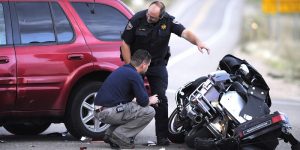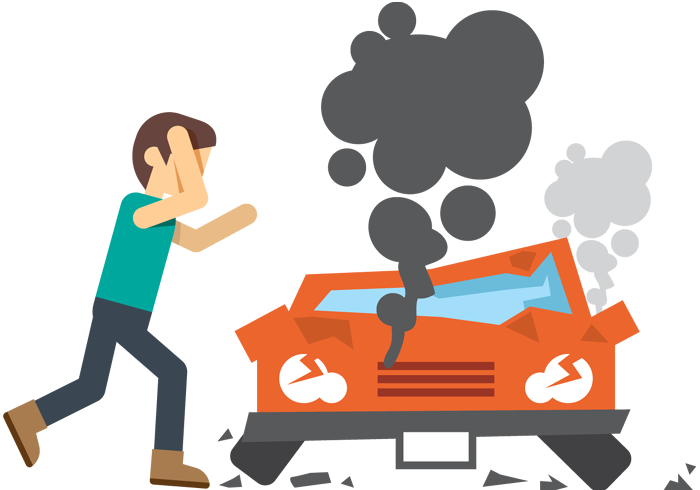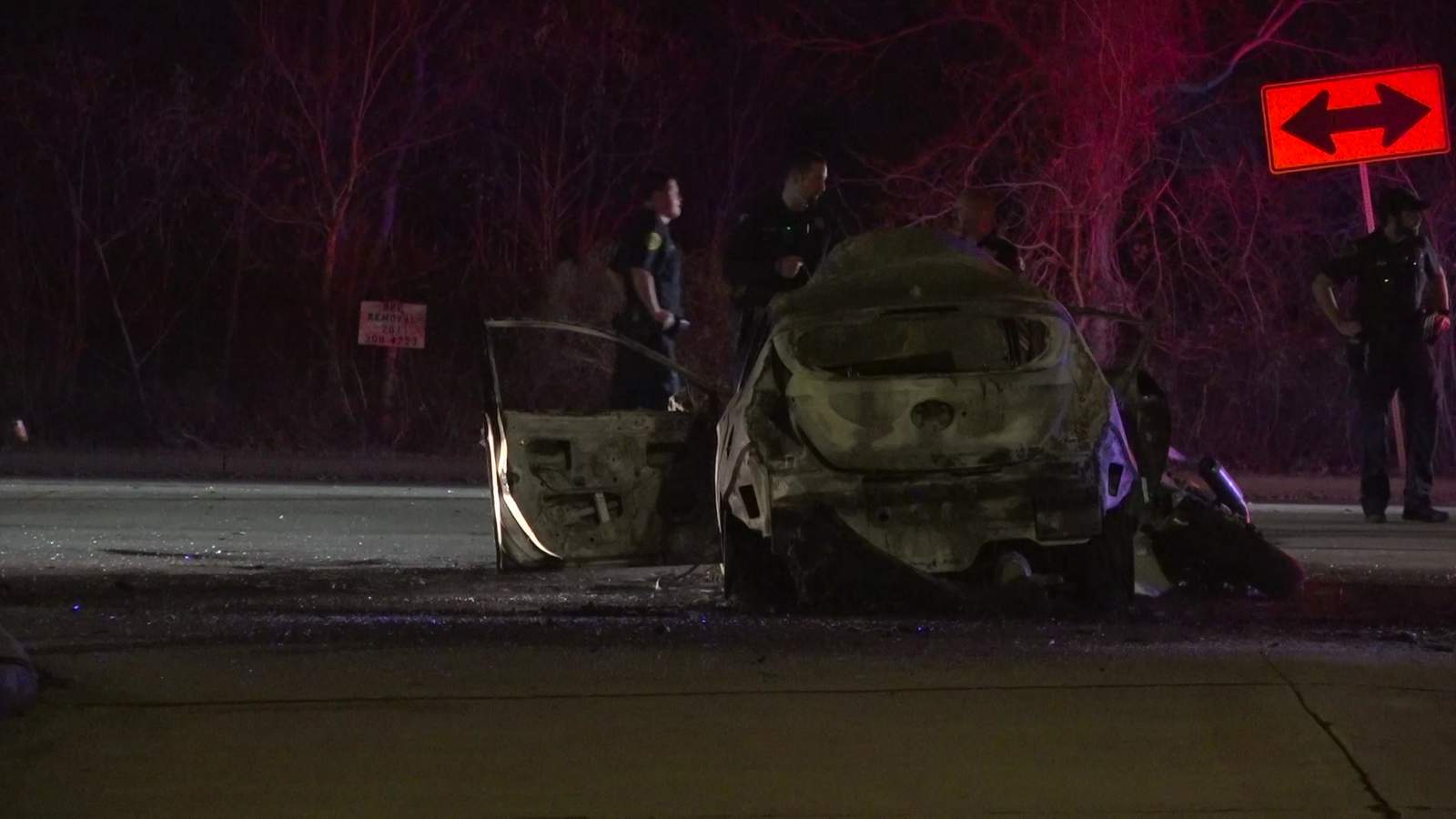 When a Texas chain-reaction car accident occurs, it can often have devastating consequences. On top of potentially being more likely to cause injuries or death, these collisions are often more complex because of all of the parties involved. Establishing an accurate timeline that maps out exactly how the crash happened and who should be assigned which portion of fault can be a significantly challenging issue on its own. However, if a fatality follows an already complex series of crashes, the situation becomes even more complicated to navigate.
When a Texas chain-reaction car accident occurs, it can often have devastating consequences. On top of potentially being more likely to cause injuries or death, these collisions are often more complex because of all of the parties involved. Establishing an accurate timeline that maps out exactly how the crash happened and who should be assigned which portion of fault can be a significantly challenging issue on its own. However, if a fatality follows an already complex series of crashes, the situation becomes even more complicated to navigate.
According to a recent local news report, a series of car crashes involving four vehicles left a teenage boy dead. The incident started when a Mercedes broke down on the side of the road when it ran into mechanical issues. Both occupants exited the Mercedes, and moments later, a Dodge pickup saw the Mercedes and stopped behind it. A Nissan traveling on the same road with a 17-year-old passenger slammed into the back of the Dodge pickup and hit another car on the road. The series of crashes concluded when the Nissan crashed into the rear of the Mercedes, which pushed it across the median and into the feeder road. The 17-year-old teenager who was riding in the Nissan did not survive the crash. Firefighters worked for nearly 45 minutes to free the driver of the Nissan, who barely escaped fatal injuries and was transported to a local hospital. According to law enforcement, there was no reason to believe that drugs or alcohol played a role in the crash, and the accident was likely caused by speeding.
In Texas, if a fatality occurs following a crash, it could potentially give rise to a wrongful death claim. Potential plaintiffs must understand the mechanics of bringing these claims. First, the party bringing the claim must prove that the deceased was not responsible for causing their own death and that it resulted from the negligence of another party.
 Texas Injury Lawyers Blog
Texas Injury Lawyers Blog


 In a typical car accident involving just two vehicles, it can be challenging to determine who was actually at fault. However, in collisions with several vehicles, resulting in multiple accidents, it can be even messier to determine how the accident started, who hit who, and what actually happened. In these Texas chain-reaction car accidents, it is crucial that accident victims have an experienced attorney in their corner to help them pursue the compensation they deserve.
In a typical car accident involving just two vehicles, it can be challenging to determine who was actually at fault. However, in collisions with several vehicles, resulting in multiple accidents, it can be even messier to determine how the accident started, who hit who, and what actually happened. In these Texas chain-reaction car accidents, it is crucial that accident victims have an experienced attorney in their corner to help them pursue the compensation they deserve. We’ve all been there—after a long day at work, or on the way to work, you find yourself fighting to keep your eyes open to focus on driving. In Texas, where most people own a car and driving is a regular part of getting around and commuting, Texas drivers are especially susceptible to these accidents because of how much time is spent on the road. Whether it was stress from the day or a restless night of sleep the night before, drowsy driving is dangerous and can often lead to fatal consequences. Unfortunately, Texas drowsy driving accidents are more common than you may expect.
We’ve all been there—after a long day at work, or on the way to work, you find yourself fighting to keep your eyes open to focus on driving. In Texas, where most people own a car and driving is a regular part of getting around and commuting, Texas drivers are especially susceptible to these accidents because of how much time is spent on the road. Whether it was stress from the day or a restless night of sleep the night before, drowsy driving is dangerous and can often lead to fatal consequences. Unfortunately, Texas drowsy driving accidents are more common than you may expect. Whether you’re sending your children to college for the first time as a parent or you’ve had an empty nest for a while, the start of an undergraduate career is often every bit as exciting as it is nerve-wracking. On the one hand, you’re proud of your kids for making it this far, but also nervous about what it’ll mean for them being on their own for the first time. However, no one ever expects to get bad news and hear that their children were involved in a major accident while away from home. When these incidents occur, those responsible can be held accountable through a Texas wrongful death or personal injury lawsuit.
Whether you’re sending your children to college for the first time as a parent or you’ve had an empty nest for a while, the start of an undergraduate career is often every bit as exciting as it is nerve-wracking. On the one hand, you’re proud of your kids for making it this far, but also nervous about what it’ll mean for them being on their own for the first time. However, no one ever expects to get bad news and hear that their children were involved in a major accident while away from home. When these incidents occur, those responsible can be held accountable through a Texas wrongful death or personal injury lawsuit. Everyone has heard a friend or loved one jokingly claim that everyone forgets how to drive when it rains. However, inclement weather or slippery and wet conditions can be a major danger to motorists, especially if there are many cars on the road. Every driver knows that when weather conditions are poor, driving with extra caution is crucial to ensuring your safety and the safety of others. Unfortunately, even with the utmost of caution, sometimes accidents inevitably happen.
Everyone has heard a friend or loved one jokingly claim that everyone forgets how to drive when it rains. However, inclement weather or slippery and wet conditions can be a major danger to motorists, especially if there are many cars on the road. Every driver knows that when weather conditions are poor, driving with extra caution is crucial to ensuring your safety and the safety of others. Unfortunately, even with the utmost of caution, sometimes accidents inevitably happen. For many, a car serves as the primary method of transportation on a daily basis. However, no matter how careful someone is while on the road or how skilled they are at driving, other motorists who do not follow the traffic laws pose a significant threat. When others are careless and cause accidents or even fatalities to occur on the road, those who are responsible can be held accountable for their actions through a Texas personal injury lawsuit.
For many, a car serves as the primary method of transportation on a daily basis. However, no matter how careful someone is while on the road or how skilled they are at driving, other motorists who do not follow the traffic laws pose a significant threat. When others are careless and cause accidents or even fatalities to occur on the road, those who are responsible can be held accountable for their actions through a Texas personal injury lawsuit. We’ve all been distracted while driving at some point while navigating our vehicles. Whether it’s exhaustion from a full day of work causing you to doze off or an urgent phone call out of nowhere from the office, we’ve all had a moment where we’ve zoned out while driving. However, not everyone is fortunate enough to emerge from these situations safe and sound. Often, accidents occur as a result of drifting off or distracted driving, and can have enormous, disastrous impacts. When such accidents occur and tragedy strikes, those who cause them can be held responsible for their actions.
We’ve all been distracted while driving at some point while navigating our vehicles. Whether it’s exhaustion from a full day of work causing you to doze off or an urgent phone call out of nowhere from the office, we’ve all had a moment where we’ve zoned out while driving. However, not everyone is fortunate enough to emerge from these situations safe and sound. Often, accidents occur as a result of drifting off or distracted driving, and can have enormous, disastrous impacts. When such accidents occur and tragedy strikes, those who cause them can be held responsible for their actions. An accident is always inconvenient, and costly, as well as dangerous. If you’re in an accident, it’s important to first call 911 immediately for anyone who is injured. Your next step? Call
An accident is always inconvenient, and costly, as well as dangerous. If you’re in an accident, it’s important to first call 911 immediately for anyone who is injured. Your next step? Call 